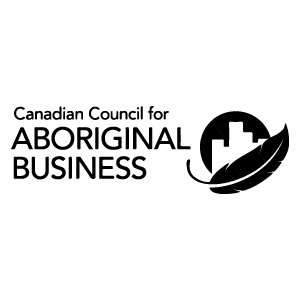It’s now been a year since Pope Francis visited and began his apology tour on Turtle Island – and more specifically for us, on Treaty No. 6 Territory.
Pope Francis was hosted by the four Nations of Maskwacis (Ermineskin Cree Nation, Samson Cree Nation, Louis Bull Tribe and Montana First Nation) and Alexis Nakota Sioux Nation on the banks of Wakamne, or “God’s Lake.”
The tour, in response to a decades-long request, was meant to alleviate or reconcile the Church’s participation in the genocide perpetrated by the residential school system. As part of the visit, the Church was expected to confirm promises – funding in the form of reparations, cooperative healing programs, and various forms of acknowledgement.
On March 30, 2023, as part of their promise, the Holy See repudiated the Doctrine of Discovery. The doctrine, baked into 15th century Papal Bulls such as the Inter Caetera, was a framework or set of principles enabling colonial powers to seize Indigenous Lands and lives without remorse.
With the doctrine in their hands, would-be conquerors who couldn’t get further than Unama’ki (Cape Breton Island) without freezing to death, befriended the Indigenous Peoples of Turtle Island – merely as a means of survival. In time, these colonial powers betrayed the Peoples of Turtle Island, attempting to forcefully assimilate us inside their institutions known as residential schools.
Perhaps it was convenient for Deist and institutional rejectionist Thomas Jefferson to claim the Doctrine of Discovery was international law, but he made it so in 1792 – cementing imperialism as the only culture of capitalism. Through this recognition, the West won their “New World,” while Indigenous Peoples were to be considered footnotes in anthropology.
It took the Catholic Church half a millennium to claim the Doctrine of Discovery was never an aspect of their teachings – even though they used it to acquire immeasurable wealth for centuries with no sign of giving it back.
For 500 years, we’ve had our rights guaranteed by Treaty stripped and ignored, Lands taken, ecosystems and waterways destroyed, and our children stolen. It continues.
So, why did Pope Francis decide the doctrine was no longer Catholic? Was it the blessed waters of Wakamne (Lac Ste Anne) and the Native babies he kissed that changed his mind? Who can say? Afterall, we’ve been fighting the Doctrine of Discovery in colonial courts since 1888. Regardless, it remains to be seen how toothless the repudiation was, because unlike our Lands, reconciliation without action is empty.
To follow the Church’s visit, on January 22nd, 2023 so-called Canada agreed to pay more than $2.7 billion to Indigenous communities as reparation for the genocide and generational trauma inflicted by residential institutions. $2.7 billion in tax revenue, paid for by everyone in so-called Canada, including the Indigenous Peoples most affected.
We threw in cash for our own reparations, while Pope Francis was in the Democratic Republic of Congo and South Sudan for Reconciliation II: King Leopold’s Ghost.
You won’t find divine justice here or anywhere.
My name is Cole Buhler and I worked as a communications intern at pipikwan pêhtâkwan during the Pope’s visit – I now work as a media relations coordinator full-time. I’m a multi-ethnic, reconnecting nēhiyaw with mixed Irish and German ancestry.
As far as blood quantum and identity, I feel connected with my nēhiyawak family because of the generational trauma they passed down to me. I possessed little connective tissue to Indigeneity growing up, but what I held onto was the idea that no matter what horrors colonialism could inflict upon generation after generation of Native kids, God would forgive the capitalists. This idea isn’t natural of course, it’s the result of 500 years of assimilation, theft, and genocide. We may all be Treaty People, but we’re also all colonized people.
On June 6, 2023 I timidly spoke at the IABC International Conference in tkaronto (Toronto) about decolonizing the media alongside our founder Shani Gwin. Working in media relations over the past year gave me the opportunity to speak about my experiences during the Papal visit …
“… we wrote press releases, media advisories, we facilitated press conferences and planned events. I corralled people who, unlike me, were using their journalism degrees [pause for laughter]. But most importantly, we were emotional support pillars for the Survivors, Elders, Grand Chief, Chiefs and Peoples of Treaty No. 6 Territory. I also bodyguarded a green room, preventing journalists from getting to our People on the pretext of deadlines-met …”
What are deadlines anyway, but an insult to storytelling? As I was recently reminded, time is on top of the colonial polyhedron.
Speaking to the communicators and PR professionals at IABC reminded me why I wanted to work during the Pope’s visit; I did it for my nôhkoms (my grandmothers) – alcoholics and addicts, abused their entire lives, never given the opportunity to experience justice. At the time I thought about what Pope Francis’s apology could have meant for them – if it could have helped them in some simple way.
Even though I never had the opportunity to know and understand my nôhkoms, I still hope they felt some kind of solace – in this life or the spirit world. I realized that if even one Survivor felt like they needed Pope Francis’s apology, then even as an intern, I was going to move heaven and earth to make that happen.
I also thought about how I viewed and still view the Catholic Church as a threat to Indigenous survival and ways of living – yet, I also understood I had to compartmentalize those thoughts. I understood Indigenous Peoples gathering to hear Pope Francis couldn’t afford the privilege of White Rage.
When white people get angry, they get convoys – Natives get Oka.
So, we’re required to consider our communities – all my relations – because if there had been any inconvenient Indians, the Pope would have been on the first plane out and our Elders who felt they needed an apology wouldn’t have got one. That thought helped me reason, helped me come to terms with what I wrote, reported on, and facilitated last summer.
When I recall these experiences, the apology at Maskwacis or the mass at Lac Ste. Anne, I don’t consider the pomp and circumstance.
I try not to relive the moments of desperate, economically marginalized Indigenous Peoples asking for forgiveness and healing from a culture so hellbent on advocating for saviorism-by-Stockholm syndrome. I try not to relive the moment I watched an old Indigenous woman, struggling to stand while raising a framed picture of a loved one up for Pope Francis to bless.
I do remember the moment a voice came over the PA, advising attendees that every item they brought with them was blessed all at once – while simultaneously hoping I had something offensive in my pocket.
I do remember the first day while we were on Ermineskin Cree Nation and how the Holy See walked ahead of the Chiefs whose Lands they were on. We were supposed to be “walking together” – the theme of the event, or at least that’s what they were calling the documentary – but again, we were left behind.
I’m not sure what changed their minds – possibly national coverage, hopefully national embarrassment – but on the second day, on the banks of Wakamne, we finally walked together. The Grand Chief and Chiefs of Treaty No. 6 Territory walked side by side to and from the lake. If anything, it made for powerful imagery. If anything, it carried a bit of hope.
And finally, what I choose to relive most often is the moment I watched Chief George Arcand Jr., the Grand Chief at the time, light a cigarette, his hands shaking, during the closing moments of the final day. I watched as he and the other Chiefs chirped each other, sharing in light-hearted conversations after they witnessed thousands of Catholics kiss the feet of their immutable rockstar.
Every time I remember those interactions – insignificant in the grand machinations of western structure and phenomenon – between the Peoples I had the privilege of working for, I cry. It wasn’t the apology, the politicians, or the pressure of the job that got to me, it was watching Grand Chief’s hands shake as he lit his cigarette, tearing up during his final interview of the day – the weight of every moment experienced in reflection.
In the aftermath, after all the Italians who called us savages in their home papers took their cameras and left, we hopped back on the bus and drove back to amiskwacîwâskahikan. We sat in quiet dignity for a while with the Grand Chief and Chiefs, reflecting on what had just happened.
Today, we’re just a few days removed from the Archdiocese of Edmonton cancelling their press event marking the first anniversary of Pope Francis’s visit. The Catholic shrine at Wakamne, where the event was supposed to happen, is the marker for one of Western Canada’s largest pilgrimage sites. It flooded in a storm – an act of God, some might say.
For us, not much has changed. The repudiation of the Doctrine of Discovery was a start, but without legal, tangible action it means nothing. Without Land Back, it means nothing. The reparations promised never arrived.
Instead, the plan has changed – the money won’t be coming out of the Vatican’s blood-money, it’ll be coming out of the pockets of Catholic parishioners. In a sense, at least to me, it feels like the justice we demanded now lies in the hands of the everyday oppressor. It makes me feel like a beggar.
Over the past week, the Confederacy of Treaty No. 6 Nations has demanded better – a seat at the Catholic table and a path forward, walking together. It remains to be seen how the Catholic Church responds, but for now, the Pope’s historic visit has left us wanting.




